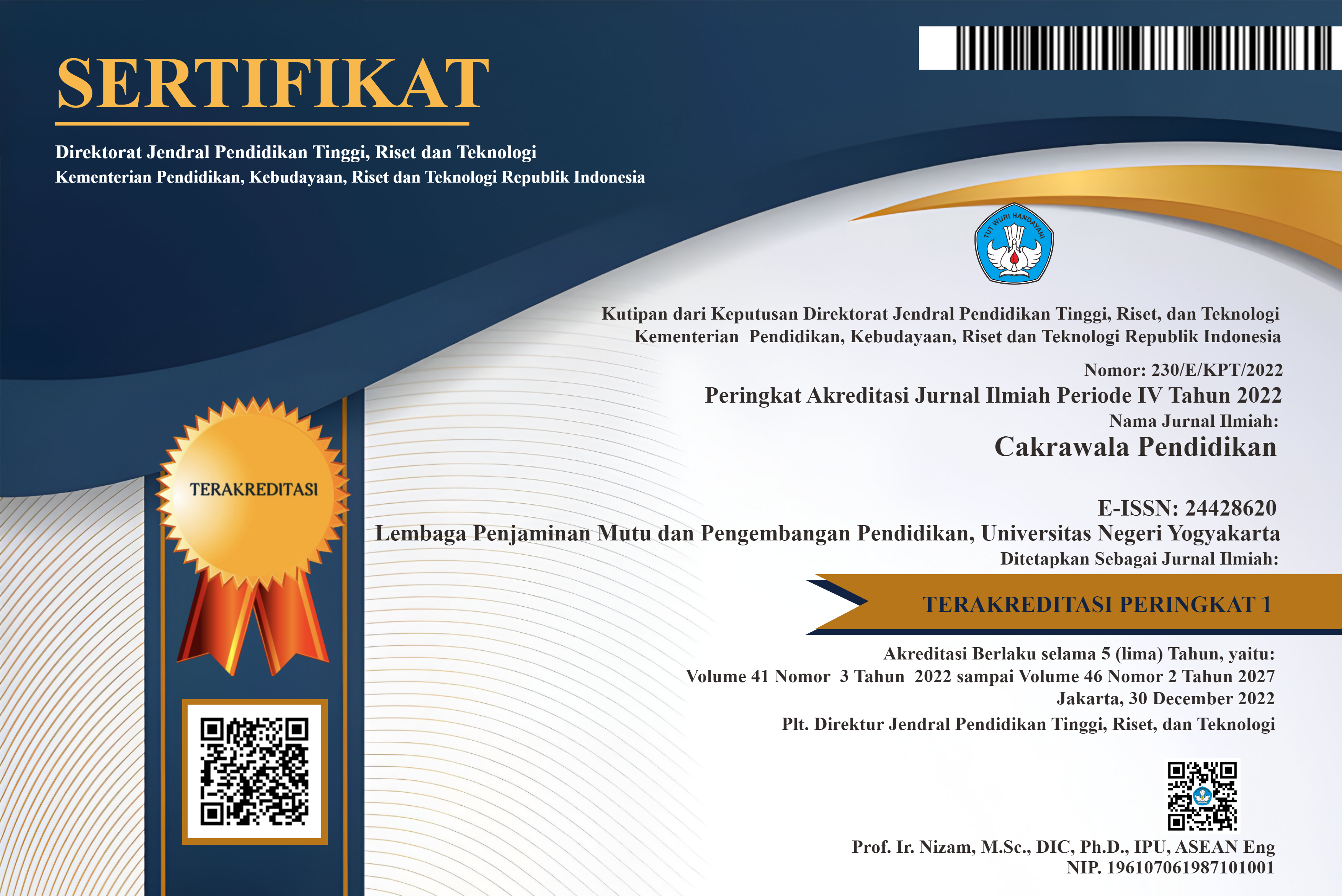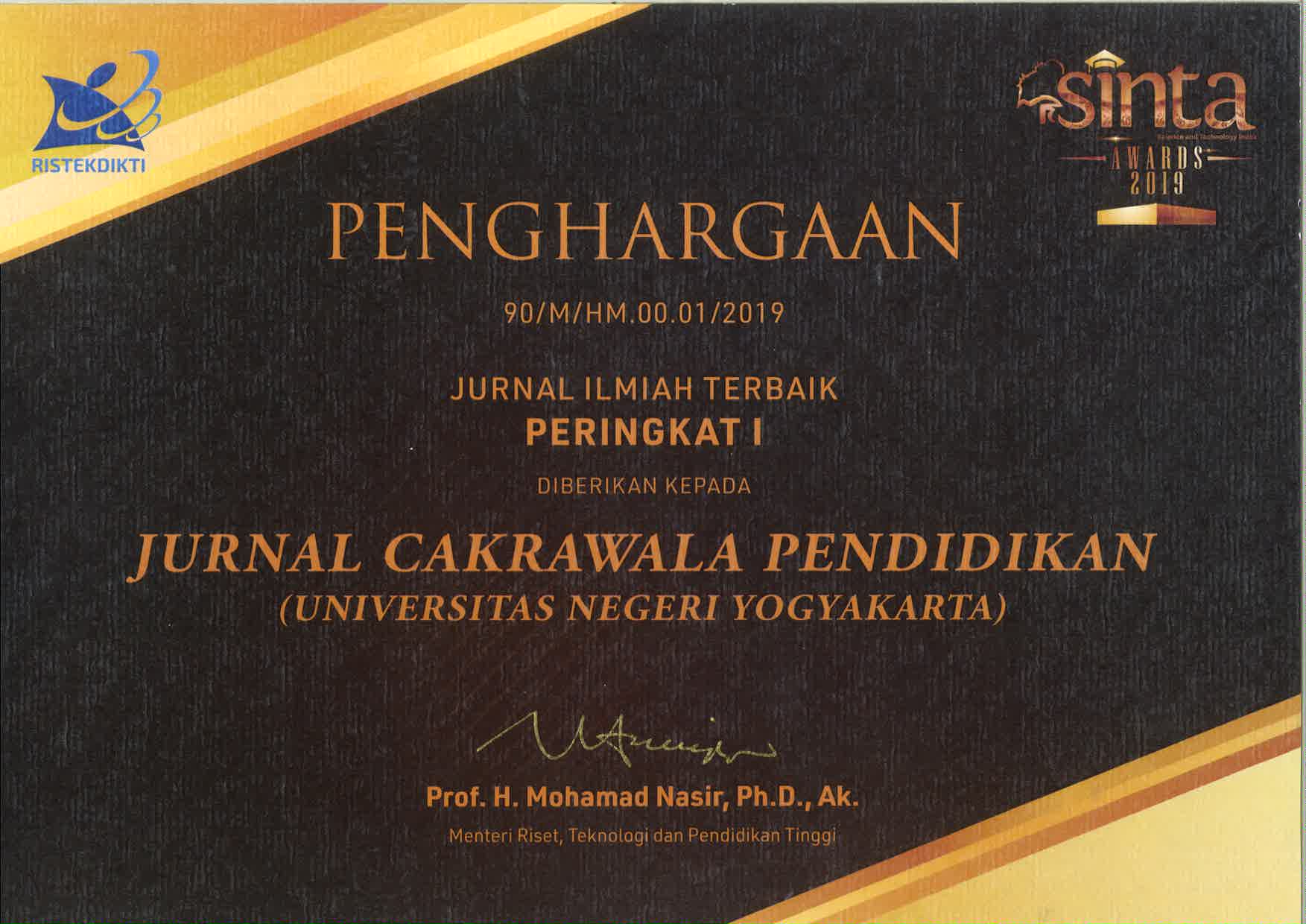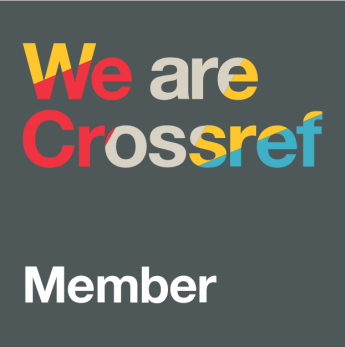Optimizing educational management through the flipped classroom method: An innovation in Islamic education learning in the digital era
Downloads
This experimental study employed nonequivalent control group design to examine the effect of the flipped classroom method on students’ achievement in Islamic education learning among grade XII students at SMA Negeri 1 Sumpiuh in 2024. The flipped classroom method was implemented by instructing students to study the material independently through learning videos followed by elaboration and discussion through online platforms. For data analysis, tests were administered to 30 students in the experimental groupand 30 students in the control groups. The results of the N-gain Score calculation showed that the improvement in material comprehension among students in the experimental group was higher than that of the control group. The N-gain score for the experimental group students was 0.3562, while that for the control group was 0.1511. Statistical analysis using an independent samples t-test showed that the comprehension ability of the experimental group was significantly higher than that of the control group (p > 0.05). Based on these findings, the flipped classroom method can be considered an effective alternative strategy to enhance students’ understanding of learning materials in online Islamic education.
Downloads
Abeysekera, L., & Dawson, P. (2015). Motivation and cognitive load in the flipped classroom: Definition, rationale and a call for research. Higher Education Research & Development, 34(1), pp. 1–14.
Aidoo, B., Macdonald, M. A., Vesterinen, V.-M., Pétursdóttir, S., & Gísladóttir, B. (2022). Transforming teaching with ict using the flipped classroom approach: Dealing with COVID-19 pandemic. Education Sciences, 12(6), p. 421. DOI: https://doi.org/10.3390/educsci12060421
Anjomshoaa, H., Hashemi, A. H. G., Alsadaji, A. J., Jasim, Z., & Masoudi, S. (2022). The effect of flipped classroom on student learning outcomes; An overview. Med Edu Bull, 3(2), pp. 431–440. DOI: https://doi.org/10.22034/MEB.2022.332357.1052
Assuah, C. K., Mantey, G. K., & Osei, L. (2022). The effect of think-pair-share learning on junior high school students’ achievement in algebraic expressions: pre-test-post-test non-equivalent control group design. Asian Journal of Probability and Statistics, 20(2), pp. 46–55. DOI: https://doi.org/10.9734/ajpas/2022/v20i2418
Bagley, S. (2018). The flipped classroom, lethal mutations, and the didactical contract: a cautionary tale. PRIMUS, 30(3), pp. 243–260. DOI: https://doi.org/10.1080/10511970.2018.1555196
Baig, M. I., & Yadegaridehkordi, E. (2023). Flipped classroom in higher education: A systematic literature review and research challenges. International Journal of Educational Technology in Higher Education, 20(1). DOI: https://doi.org/10.1186/s41239-023-00430-5
Bergmann, J. & Sams, A. (2012). Flip your classroom: Reach every student in every class every day. International Society for Technology in Education.
Bicen, H., & Beheshti, M. (2019). Assessing perceptions and evaluating achievements of ESL students with the usage of infographics in a flipped classroom learning environment. Interactive Learning Environments, 30(3), pp. 498–526. DOI: https://doi.org/10.1080/10494820.2019.1666285
Bishop, J. L. (2013). The flipped classroom: A survey of the research. 2013 ASEE Annual Conference & Exposition Proceedings, 23.1200.1-23.1200.18. DOI: https://doi.org/10.18260/1-2--22585
Bishop, J. L., & Verleger, M. A. (2013). The flipped classroom: A survey of the research. ASEE National Conference Proceedings.
Chen, C. C. (2021). Effects of flipped classroom on learning outcomes and satisfaction: an experiential learning perspective. Sustainability, 13(16), p. 9298. DOI: https://doi.org/10.3390/su13169298
Chen, Y., Wang, Y., Kinshuk, K. & Chen, N. S. (2014). Is FLIP enough? Or should we use the FLIPPED model instead? Computers & Education, 79, pp. 16–27. DOI: https://doi.org/10.1016/j.compedu.2014.07.004
Chi, M., Wang, N., Wu, Q., Cheng, M., Zhu, C., Wang, X., & Hou, Y. (2022). Implementation of the flipped classroom combined with problem-based learning in a medical nursing course: A quasi-experimental design. Healthcare, 10(12), p. 2572. DOI: https://doi.org/10.3390/healthcare10122572
Chung, C. J., Lai, C. L., & Hwang, G. J. (2021). Roles and research trends of flipped classrooms in nursing education: A review of academic publications from 2010 to 2017. Interactive Learning Environments, 29(6), pp. 883–904. DOI: https://doi.org/10.1080/10494820.2019.1619589
Davis, N. L., Gough, M., & Taylor, L. L. (2019). Online teaching: Advantages, obstacles and tools for getting it right. Journal of Teaching in Travel & Tourism, 19(3), pp. 256–263.
Divjak, B., Rienties, B., Iniesto, F., Vondra, P., & Žižak, M. (2022). Flipped classrooms in higher education during the COVID-19 pandemic: Findings and future research recommendations. International Journal of Educational Technology in Higher Education, 19(1). DOI: https://doi.org/10.1186/s41239-021-00316-4
Fallah, T., Hafezi, F., Makvandi, B., & Bavi, S. (2022). Interdisciplinary Journal of Virtual Learning in Medical Sciences. Interdisciplinary Journal of Virtual Learning in Medical Sciences, 13(1), pp. 34–42. DOI: https://doi.org/10.5812/ijvlms
Fischer, I. D., & Yang, J. C. (2022). Flipping the flipped class: Using online collaboration to enhance EFL students’ oral learning skills. International Journal of Educational Technology in Higher Education, 19(1). https://doi.org/10.1186/s41239-022-00320-2
Fulton, K. (2012) ‘Upside down and inside out: flip your classroom to improve student learning’, Learning & Leading with Technology, 39(8). Retrieve at http://www.iste.org, February 17, 2023)
González-Velasco, C., Feito-Ruiz, I., González-Fernández, M., Álvarez-Arenal, J.-L., & Sarmiento-Alonso, N. (2021). Does the teaching-learning model based on the flipped classroom improve academic results of students at different educational levels? Revista Complutense de Educación, 32(1), pp. 27–39. DOI: https://doi.org/10.5209/rced.67851
Herreid, C. F., & Schiller, N. A. (2013). Case studies and the flipped classroom. Journal of College Science Teaching, 42(5), pp. 62–66.
Hsu, C. Y., & Wu, T. T. (2023). Application of business simulation games in flipped classrooms to facilitate student engagement and higher-order thinking skills for sustainable learning practices. Sustainability, 15(24), p. 16867. DOI: https://doi.org/10.3390/su152416867
Jasrial, J., Saputra, A., & Rifma, R. (2023). Improving learning outcome: The effectiveness of ebook reading literacy based in learning management psychology. Cakrawala Pendidikan: Jurnal Ilmiah Pendidikan, 42(3), pp. 631-641. DOI: https://doi.org/10.21831/cp.v42i3.53033
Jiang, M. Y., Jong, M. S., Lau, W. W., Chai, C., Liu, K. S., & Park, M. (2020). A scoping review on flipped classroom approach in language education: Challenges, implications and an interaction model. Computer Assisted Language Learning, 35(5–6), pp. 1218–1249. DOI: https://doi.org/10.1080/09588221.2020.1789171
Kim, J., Lee, H., & Cho, Y. H. (2022). Learning design to support student-AI collaboration: Perspectives of leading teachers for AI in education. Education and Information Technologies, 27(5), pp. 6069–6104. DOI: https://doi.org/10.1007/s10639-021-10831-6
Koponen, J. (2019). The flipped classroom approach for teaching cross-cultural communication to millennials. Journal of Teaching in International Business, 30(2), pp. 102–124. DOI: https://doi.org/10.1080/08975930.2019.1663776
Latorre-Cosculluela, C., Suárez, C., Quiroga, S., Anzano-Oto, S., Lira-Rodríguez, E., & Salamanca-Villate, A. (2021). Facilitating self-efficacy in university students: An interactive approach with Flipped Classroom. Higher Education Research & Development, 41(5), pp. 1603–1617. DOI: https://doi.org/10.1080/07294360.2021.1937067
Lo, C. K., & Hew, K. F. (2017). A critical review of flipped classroom challenges in K-12 education: Possible solutions and recommendations for future research. Research and Practice in Technology Enhanced Learning, 12(4), pp. 1–22. DOI: https://doi.org/10.1186/s41039-016-0044-2
Ma, Y. (2023). Exploration of flipped classroom approach to enhance critical thinking skills. Heliyon, 9(11), e20895. DOI: https://doi.org/10.1016/j.heliyon.2023.e20895
Mishra, P., & Koehler, M. J. (2006). Technological pedagogical content knowledge: A framework for teacher knowledge. Teachers College Record, 108(6), pp. 1017–1054.
Murat, M., & Cam, A. (2021). Flipped classroom on fifth grades’ 21st century skills and scientific epistemological beliefs. International Journal of Technology in Education, 4(4), pp. 752–771. DOI: https://doi.org/10.46328/ijte.94
Musa, S., Suherman, A. M., Sujarwo, S., & Nurhayati, S. (2024). Continuous professional growth: A study of educators’ commitment to lifelong learning. Cakrawala Pendidikan: Jurnal Ilmiah Pendidikan, 43(2),502-512. DOI: https://doi.org/10.21831/cp.v43i2.66654
O’Flaherty, J. & Phillips, C. (2015). The use of flipped classrooms in higher education: A scoping review. The Internet and Higher Education, 25, pp. 85–95. DOI: https://doi.org/10.1016/j.iheduc.2015.02.002
Oudbier, J., Spaai, G., Timmermans, K., & Boerboom, T. (2022). Enhancing the effectiveness of flipped classroom in health science education: A state-of-the-art review. BMC Medical Education, 22(1). DOI: https://doi.org/10.1186/s12909-021-03052-5
Peng, W., Xiong, Y., Wei, J., Chen, X., Huai, W., He, S., Liu, D., Tian, X., Tang, S., & Chen, Y. (2022). Flipped classroom improves student learning outcome in Chinese pharmacy education: A systematic review and meta-analysis. Frontiers in Pharmacology, 13(936899). DOI: https://doi.org/10.3389/fphar.2022.936899
Singh, J. K. N., Jacob-John, J., Nagpal, S., & Inglis, S. (2022). Undergraduate international students’ challenges in a flipped classroom environment: An Australian perspective. Innovations in Education and Teaching International, 59(6), pp. 724–735. DOI: https://doi.org/10.1080/14703297.2021.1948888
Sumadevi, S. (2023). Effective use of diverse technology tools in flipped learning approach. A Journal of Historical Research, 53(2), pp. 106-113
Thai, N. T. T., De Wever, B., & Valcke, M. (2017). The impact of a flipped classroom design on learning performance in higher education: Looking for the best “blend” of lectures and guiding questions with feedback. Computers & Education, 107, pp. 113–126.
Thatphaiboon, R., & Sappapan, P. (2022). The effects of the flipped classroom through online video conferencing on efl learners’ listening skills. Arab World English Journal, 13(3), pp. 89–105. DOI: https://doi.org/10.24093/awej/vol13no3.6
Wassinger, C. A., Owens, B., Boynewicz, K., & Williams, D. A. (2022). Flipped classroom versus traditional teaching methods within musculoskeletal physical therapy: A case report. Physiotherapy Theory and Practice, 38(13), pp. 3169–3179. DOI: https://doi.org/10.1080/09593985.2021.1941457
Wright, G. W., & Park, S. (2022). The effects of flipped classrooms on K-16 students’ science and math achievement: A systematic review. Studies in Science Education, 58(1), pp. 95–136. https://doi.org/10.1080/03057267.2021.1933354
Yeh, Y. C. (2022). Student satisfaction with audio-visual flipped classroom learning: A mixed-methods study. International Journal of Environmental Research and Public Health, 19(3), p. 1053. DOI: https://doi.org/10.3390/ijerph19031053
Yılmaz, F. G. K. (2021). 'An investigation into the role of course satisfaction on students’ engagement and motivation in a mobile‐assisted learning management system support flipped classroom', Technology, Pedagogy and Education, 31(1). DOI: 10.1080/1475939X.2021.1940257.
Zainuddin, & Halili, S. H. (2016). Flipped classroom research and trends from different fields of study. The International Review of Research in Open and Distributed Learning, 17(3), pp. 313–340
Copyright (c) 2025 Atabik Atabik

This work is licensed under a Creative Commons Attribution-ShareAlike 4.0 International License.
Jurnal Cakrawala Pendidikan, Jurnal Ilmiah Pendidikan, with ISSN: 0216-1370, is published by the Institute of Education Development and Quality Assurance (LPPMP UNY). Cakrawala Pendidikan has been recently has been re-accredited by Indonesian Ministry of Education and Culture decision Number 230/E/KPT/2022 which is valid for five years since enacted on 30 December 2022.




























